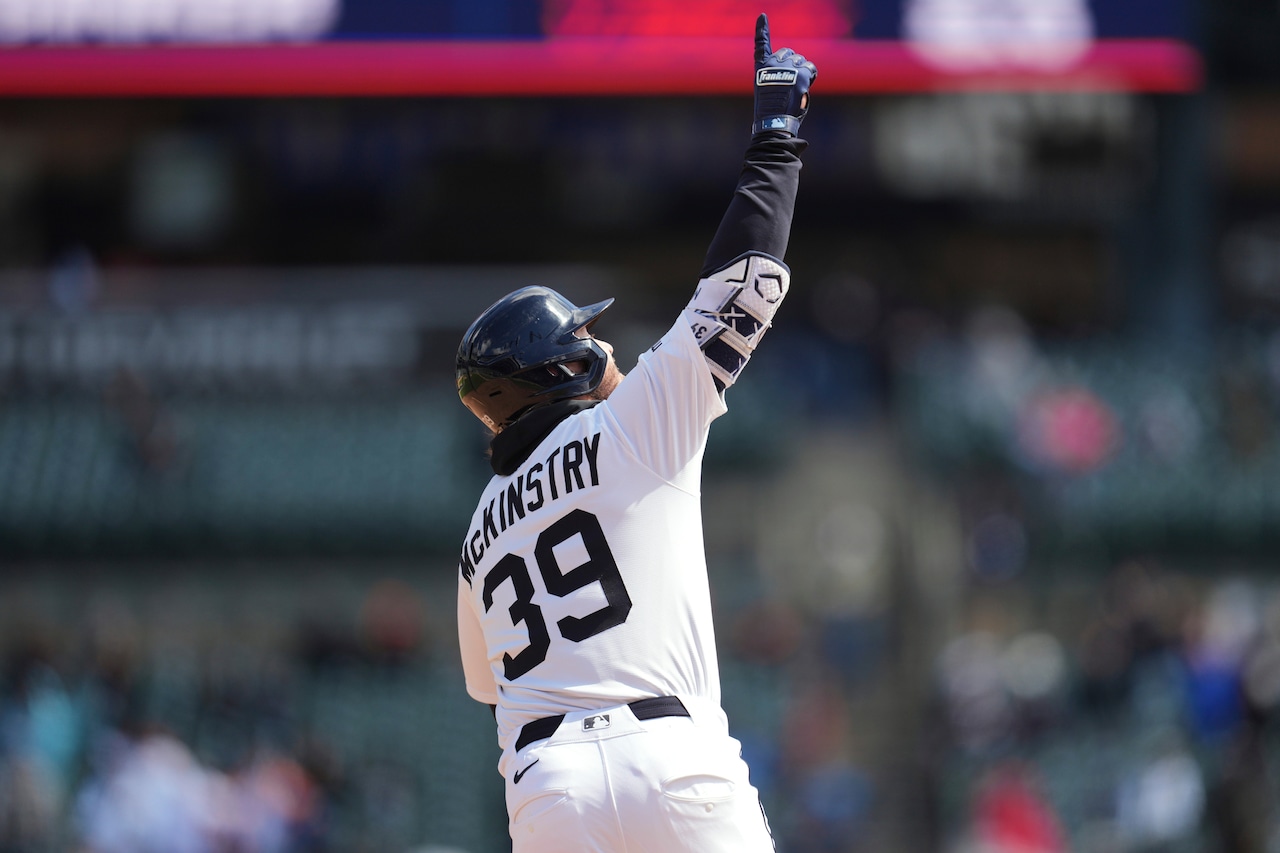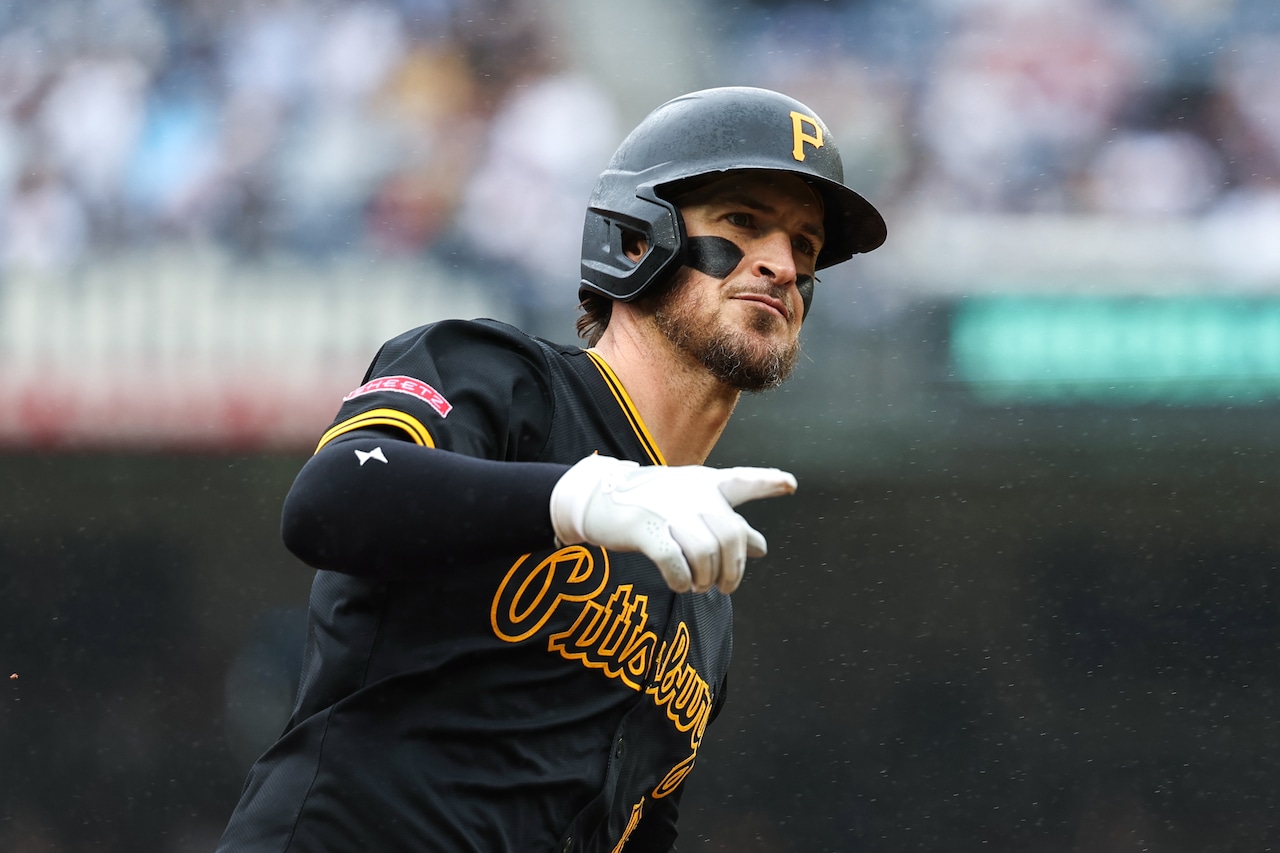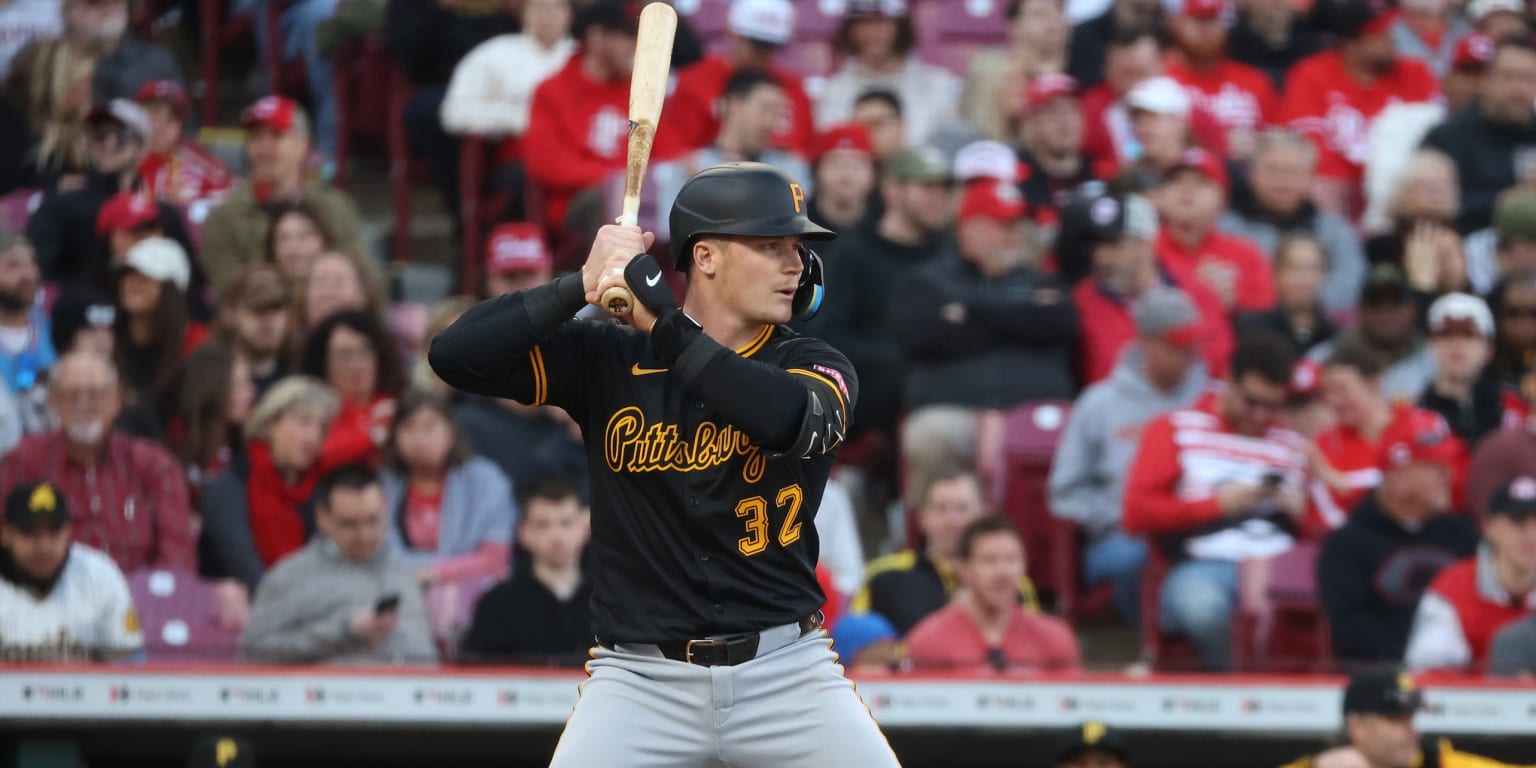The idea, as Nico Harrison put it, was to get “ahead of a tumultuous summer.” That was one of many justifications tendered for the Dallas Mavericks’ earth-shaking decision to trade Luka Dončić to the Los Angeles Lakers in the wee hours of Feb. 2 for a package headlined by Anthony Davis — one of the most stunning transactions, in-season or otherwise, in NBA history.
Dončić’s exploits in Dallas had earned him the opportunity to negotiate a supermax extension after this season — a mega-deal that could have cost the Mavericks up to an estimated $345 million over five years. And if the Mavs didn’t pony up? Well, Dončić’s current contract includes a player option for 2026-27 that would allow him to enter unrestricted free agency after next season — a potential cudgel for the superstar and his representation to wield in pursuit of a preferred payday, a preferred landing spot or both.
Advertisement
So: the trade. Out goes Luka, one of the most decorated and beloved players in franchise history; in comes Davis, a five-time All-NBA selection, nearly six years Dončić’s senior, but under contract through at least 2027.
“I do believe that we positioned ourselves to win now and also win in the future,” Harrison said. “And that’s ultimately the goal and why we’re here. … We really feel like we got ahead of what was going to be a tumultuous summer.”
What has followed, however, has been a staggeringly tumultuous two months — a period marked in Dallas by a devastating plunge in the standings, and in Los Angeles by the coalescing of what could be a bona fide power.
Dončić returns to Dallas on Wednesday, when the Lakers take on the Mavericks in a game rife with postseason implications and emotional stakes. Before we get there, though, let’s take a quick refresher on where we’ve been — how both teams have fared in the weeks since the all-time blockbuster that turned the NBA on its head.
Advertisement
-
The Mavericks were 26-23, eighth in the West, scoring 115.2 points per 100 possessions (No. 8 on offense) and allowing 112.4 points-per-100 (No. 12 on D) for a +2.8 net rating (10th).
It feels worth noting that Dallas had been without Dončić for the better part of seven weeks at that point, owing to a nasty left calf strain. Before Luka’s early exit on Christmas, the Mavs were 19-10, ranked fourth on offense and tied for 10th on defense. Seems pretty relevant that, mere months after making the Finals, Dallas had looked like a mid-50s-win team with its main dude healthy … though I suppose the Mavs’ front office would argue it’s also notable that Luka, who’d missed chunks of time over the previous couple of seasons with lower leg injuries, had already missed five more games than he’d played.
-
The Mavericks, on the other hand, have gone 12-18, a .400 winning percentage, 11th in the West, scoring 111.9 points-per-100 (23rd) and allowing 119.1 points-per-100 (24th) for a net rating of -7.2 points-per-100 (25th).
The gigantic, flashing-lights piece of relevant context here? Dallas has been absolutely decimated by injuries since the deal.
A disaster in Dallas
After a tremendous first half in his Dallas debut, Davis — who was making his return from an abdominal injury suffered in his latter days as a Laker — left in the third quarter with what was later diagnosed as an adductor strain. The injury would cost him the next 18 games.
Advertisement
In the Mavericks’ next game, an overtime loss to the Kings, center Daniel Gafford — who’d been starting at the 5 since Dereck Lively II went down with a stress fracture in his right ankle — suffered a right knee injury. He’d miss the next 21 games.
P.J. Washington, battling an ankle injury, missed a handful of games on either side of the All-Star break. Caleb Martin — whom Harrison had acquired from Philadelphia in exchange for Quentin Grimes, a 3-and-D guard set to hit restricted free agency who was deemed surplus to requirements after the Luka-AD trade brought Max Christie to Dallas — missed his first 13 games after the deal with a hip injury that was evidently more serious than the Mavs thought when they traded for him. (Grimes, on the other hand, almost immediately exploded for a similarly ravaged Sixers team; he has averaged just under 23 points, five rebounds and 4.5 assists per game on .610 true shooting in Philadelphia.)
The most catastrophic blow, though, came one month after the trade. That’s when Irving — who’d shouldered most of the Mavericks’ ball-handling, shot-creation and scoring workload in the absence of Dončić and Davis — went down with a frightening knee injury later revealed to be a torn left ACL that would knock him out for the rest of the 2024-25 campaign.
There have been a couple of relative bright spots. Naji Marshall, a career role-playing swingman has been pressed into outsized offensive duty, averaging 16.3 points per game on 51.9% shooting since the trade and ranking in the top 20 in the NBA in points in the paint. Undrafted two-way guard Brandon Williams has seized his opportunity on a roster desperate for somebody to handle and create, averaging 14.7 points and 3.7 assists in 23.7 minutes per game on 54/41/88 shooting splits since the trade to earn himself a new contract.
Advertisement
And when they’ve actually had Davis, of course, things have looked a lot better. He’s averaging 20.6 points, 9.6 rebounds, 3.4 assists and 2.4 steals-plus-blocks in just 28.9 minutes per game — he came back on a minutes restriction and has only cracked 30 minutes once since his return — and Dallas is 5-2 with him in the lineup.
The Mavs haven’t been good with Davis on the floor, exactly. They’ve scored just 109.9 points-per-100 in his minutes, which would rank 26th in the league over the full season. (This is somewhat expected, considering Davis only got to play one half with Irving.) They have been considerably better defensively, though, giving up 112.4 points-per-100, which would sit 11th, with a defensive rebounding rate that would rank fourth.
Despite barely getting to play in double-big looks — just 60 minutes alongside Gafford and only 25 with Lively — Davis has made a notable defensive impact in the paint. Opponents’ shot volume at the rim drops precipitously with AD roaming, and they’re only converting 59.4% of their up-close attempts — a mark that would lead the league. Combine great defense with just-enough offense, and you can give yourself a chance:
On some nights, anyway. For the most part, though, it’s been bleak. Since the trade, the Mavs sit in the bottom third of the league in [takes deep breath] points scored and allowed per possession, 3-pointers made and attempted, team 3-point accuracy, offensive and defensive rebounding rate, how frequently they allow shot attempts at the rim, opponent field-goal percentage at the rim, from floater range and from 3, the share of their offensive possessions that come in transition and half-court defensive efficiency [cleansing exhale].
Advertisement
That they’re still in position for a play-in berth says more about the depths to which the Jazz, Pelicans and Spurs have tanked, and the staggering degree to which the Suns have fallen apart, than it does about the Mavs themselves. The weight of all those injuries after the trade effectively crushed their season.
It’s been pretty much the opposite for the Lakers, who’ve risen up to third in the West since the trade and have looked, at times, like a team with a blueprint for a deep postseason run — a far cry from the negative-point-differential squad that LeBron James said in late January didn’t “have room for error.”
A superstar like Luka has a way of increasing that margin.
Hollywood’s newest star
Dončić is averaging 27.1 points, 8.1 rebounds, 7.6 assists and 1.5 steals in 35.2 minutes per game as a Laker. His shooting percentages have dipped — 36% from 3-point range, about two percentage points lower than last season, and just 48% inside the arc, which would comfortably be a career-low, with declines at the rim, from floater range and on long 2s. Even so: The Lakers are scoring 118.8 points-per-100 with Luka on the floor — a top-four rate of offensive efficiency.
Advertisement
There are a few reasons why the offense has improved since Dončić’s arrival. L.A. is generating 22.5 made free throws per 100 field-goal attempts since the trade, up from 21.5 before the deal; Luka himself is getting to the line 8.7 times per game as a Laker, more than anybody but Giannis Antetokounmpo and Shai Gilgeous-Alexander in that span (minimum 10 games played). The Lakers have also rocketed up the charts in 3-point frequency — 43.2% of their shots have been 3s since the Luka trade, the third-highest rate in the league, up from 35.8% (26th) before — and in team 3-point shooting, knocking down 38.2% from deep (seventh in the NBA) since the trade, up from 15th (36.4%) before.
As helpful as it’s been to import a high-volume 3-point creator like Luka — only three players have taken more triples per game since the trade, and only nine have assisted on more long balls per game — the Lakers have also seen their fast-break game hit a new gear since his arrival. They’re adding more points per 100 possessions through transition play since than they were before, because while they don’t run a lot more (Luka’s teams have pretty much always played at a more deliberate pace) they’re doing so much more effectively (1.26 points per transition play since, 1.20 before), thanks partly to Luka’s penchant for hit-ahead passes — and LeBron’s eagerness to run go routes:
There have been some bumps and bruises in the integration process: losses to bottom-feeding Utah and Charlotte in Dončić’s second and third games as a Laker, as he shook the rust off. A winless four-game road trip during which James suffered a groin strain. A pair of losses to the Bulls, one a 29-point blowout and the other on a half-court buzzer-beater.
Advertisement
The defensive work has been shaky at times, particularly when JJ Redick has Dončić, James and ascendant third scorer Austin Reaves on the floor. Lineups featuring that high-powered trio have been outscored by 2.9 points-per-100, with opponents shooting 39.5% from 3 against those lineups. All told, opponents have taken a higher share of their shots at the rim and from deep against the Lakers since the trade than before — more than 40% of attempts from 3-point range — but have thus far underperformed their shot profile. If that changes, and more of those shots that L.A.’s been giving up start to go down, the Lakers’ luck could change.
Overall, though, the outlook’s been rosy. The Lakers have gone 16-10 with Dončić in the lineup — including Tuesday’s loss in Oklahoma City, which L.A. led at the time of Luka’s (pretty soft) ejection — and are outscoring opponents by 6.9 points-per-100 with him on the floor. Only OKC, Boston and Cleveland have better full-season marks.
Dončić is producing like the franchise cornerstone everyone expected him to be. James is still putting up monster numbers while responding to a slight downshift in his on-ball playmaking responsibility by doing more of pretty much everything else. Reaves has fit beautifully next to the two all-time creators. Rui Hachimura, Jaxson Hayes, Jarred Vanderbilt and Dorian Finney-Smith give Redick a variety of frontcourt options next to his stars; Gabe Vincent and Jordan Goodwin provide some point-of-attack snarl and competent complementary backcourt play.
It’s not perfect, but it fits; there’s a real team here. There’s no guarantee that it’s enough to win three series in a brutally competitive West and make the Finals, but the Lakers now have a puncher’s chance that they didn’t back in January. If it looks familiar to you, it’s probably because it’s the same one the Mavericks had, before the whole world changed and left us here.


